A 12-gauge Remington 870 Magnum is relatively heavy, and most quail hunters wouldn’t choose it for a long day chasing bobwhites. But one glance at the gun told me it had a storied history. The bluing was all but gone from the receiver, and the stock had long ago lost its factory finish. This veteran bore the scars of countless hours afield, and it was clear that it often encountered thorns and barbed wire. It hadn’t been neglected, but it had been used hard. Rusty Doughty pulled the gun from its case as his dad, Russ, slipped shells into the pockets of his game vest. I soon learned that Russ’s wife had given him the gun for Christmas back in the late ’80s. Sometime in the ’90s, Rusty had borrowed it for a turkey hunt, and now, 20 years later, it was still on loan. Russ had since resigned himself to Rusty’s claim on the old pump gun, and though they teased each other over the “theft,” it was obvious both men were content with Rusty’s possession, if not ownership. The father and son shared more than 70 years combined experience hunting quail, and this battered old shotgun was part of their tradition.
It’s All About the Dogs
About the time the Doughtys had finished their coffee, another truck with a dog box in the back wheeled into the parking lot at Cover Prairie Conservation Area (CA). Cory Purgason is a friend of the Doughtys, and he’d brought Pearl and Sage, both Brittanies, to join the hunt with Rusty’s dog, George — also a Brittany and nephew to Pearl. With guns loaded, the trio set out with Pearl and Sage. George would remain in the truck for now, and would get his chance to hunt later. With the temperature in the low 40s and overcast skies, the weather was ideal to create damp conditions that boded well for the dogs’ ability to catch wind of a covey.
The hunters took their time following the dogs, which cast back and forth through the native grass and brier thickets. Pearl showed a lot of interest in a plum thicket at the bottom of a wide draw, and her short tail wagging furiously told us something had been here, if it wasn’t still. The dogs didn’t point, however, and as the hunting party climbed the slope above the draw, both dogs disappeared over the crest of the hill. A few minutes later, the dogs hadn’t checked back, and Rusty and Cory hurried to the top just in time to see a handful of quail flush wild from a thicket. The dogs had pointed, but the birds got nervous and flushed before the hunters could get in position for a shot. I checked my watch. It had been only 20 minutes since we left the truck, and we’d found birds less than 100 yards from the parking lot!
A Model of Quail Habitat Management
The Dan and Maureen Cover Prairie Conservation Area is a 736-acre tract located in Howell County just a few miles from Koshkonong. Dan Cover purchased the property in 1988. Prior to his purchase, it had been cleared and used for raising hogs. Upon purchasing the tract, Cover set about restoring it to usable wildlife habitat, planting native grasses, removing exotic species, and using prescribed fire to create the conditions quail and other wildlife need In 2001, Cover donated the property that would bear his name to the Missouri Department of Conservation. Today, Department staff use management efforts similar to those Cover used. Prescribed fire is the primary tool Department staff use to maintain habitat structure and species composition. Invasive exotic plants are a constant challenge to effective management, and Department employees spend considerable time controlling them in an effort to increase natural diversity on the area. The abundant native little bluestem, broomsedge, blackberry, and sumac create a tapestry of plant cover suitable for quail, and the dry, rocky soil, combined with prescribed fire, results in an abundance of native foods for quail and many other species. In fact, there is not a single acre of planted food plots on this area, or even within sight of it, a testament to the land’s ability to support wildlife with proper management.
A Taste of The Good Old Days
While the dogs continued their search for the elusive bobwhites, I had a chance to talk more with the hunters. Having hunted quail since the 1970s, Russ told me that when he started, quail — Missouri’s state game bird — were common. In southeast Missouri, where he lived at the time, he and his partners would hop from farm to farm, and it wasn’t uncommon in those days to find 10 or 12 coveys in a day’s hunt. Then, with a touch of sadness in his voice, he recounted seeing the first signs of trouble in the early ’80s, watching a bulldozer clear an entire hillside to make way for a field of soybeans. That was just the beginning of what would be a long, gradual decline in Missouri’s quail. By the late ’80s, bobwhites had become scarce enough that Russ quit hunting them, preferring to remember things as they had been. But about six years ago, Rusty, remembering some of those early hunts and the many stories of dogs and guns and birds, started quail hunting again, and it didn’t take much effort to convince the elder Doughty to join him.
Russ commented that the habitat on Cover Prairie CA reminded him of what much of the Missouri Ozarks once looked like — large patches of native grass interspersed with clumps of sumac, plum, blackberry, and scrub oak. “Predators can get a bird or two,” Russ said, “but habitat loss wipes out whole coveys at a time.” As we looked at the habitat blanketing the Ozark hills, it was apparent that any quail on this area had a lot of places to hide, nest, and raise their young. Rusty commented that while they had hunted here before and always found plenty of birds, the hunting experience is different on Cover Prairie than on most private farms and even other public areas. Here the entire landscape is habitat compared to traditional farm settings where the birds and the hunters tend to stick to brushy fencerows and other narrow patches of cover. All the habitat here makes the hunting tough, he observed, because the birds can be anywhere.
“I’d rather leave my gun…”
The Doughtys had hunted Cover Prairie just the weekend before and found three coveys in a morning’s hunt. But this morning the quail were proving elusive, despite Pearl and Sage’s efforts. “Look at this cover,” Rusty said. “Everything is scrubby, brushy, and thorny. The birds can move through it easy, but not much else can.”
After a few more hours, we had looped back to the trucks. It was nearly lunchtime, and while the walk had been pleasant, it felt good to sit for a few moments.
When asked what he considered a good day quail hunting, Rusty never hesitated with his reply. “One pointed covey is good. Three coveys is excellent.”
Time and change have been cruel to this popular game bird, and opportunities to hunt quail have declined. But places like Cover Prairie and people who are working to restore quail habitat on their own land give us hope that hunters will continue to have chances to hunt good cover with family and friends. And while I’m sure there was some disappointment in not finding more birds, it was obvious the younger Doughty shared his father’s earlier sentiment when he said, “If I had to leave something at home, I’d rather leave my gun than the dog.” A remarkable statement and strong testament, considering the history and memories that battered gun holds for this family
Hunts by Special Permit Available Every Fall
Cover Prairie is a designated quail emphasis area (QEA), meaning that extra efforts are taken there to create and maintain habitat beneficial to bobwhites. In an effort to control hunting pressure on this small area, Department staff conducts hunts by special permit only. No other Department QEA requires a special permit to hunt quail. Anyone can apply for the Cover Prairie hunt, and a hunter who gets drawn can include up to three other hunters in his or her party. Two hunters are selected per week for the entirety of the statewide quail season, and groups may harvest no more than four birds per party.
Applications for the hunt are accepted Sept. 1 through Sept. 30 each year, with a drawing held on Oct. 1. Hunters may hunt on their own card and may hunt with another drawn party, but they may not hunt more than twice in a season. In addition to managed quail hunts, Cover Prairie is open to the public for hiking, nature viewing, and scouting. Also, Cover Prairie supports good numbers of cottontail rabbits, and it is open for rabbit hunting during that portion of the rabbit season outside the quail season dates. For more information on the Cover Prairie Managed Quail Hunt, contact the Ozark Regional Office.
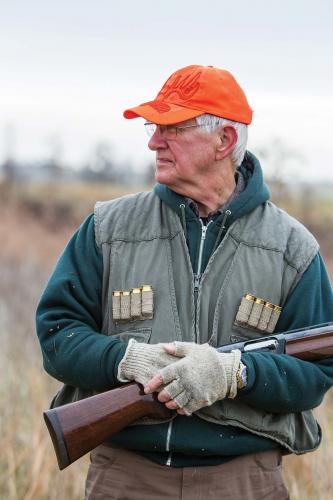
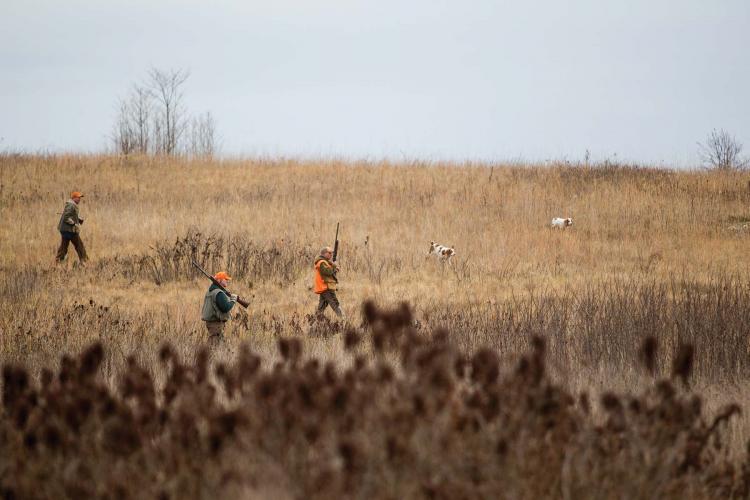


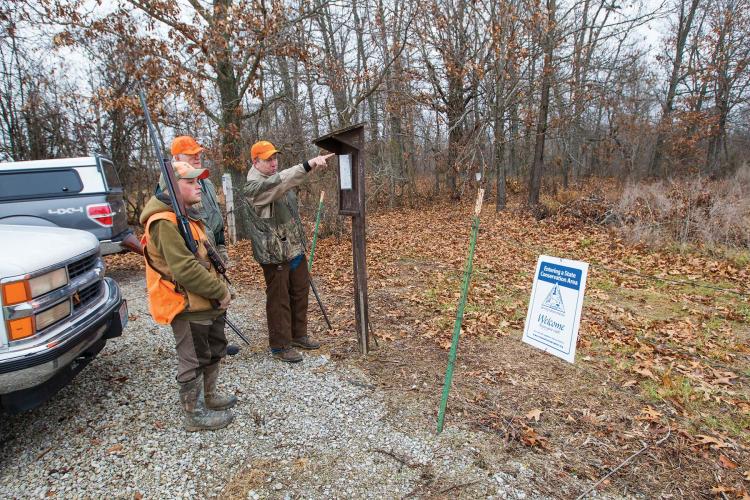
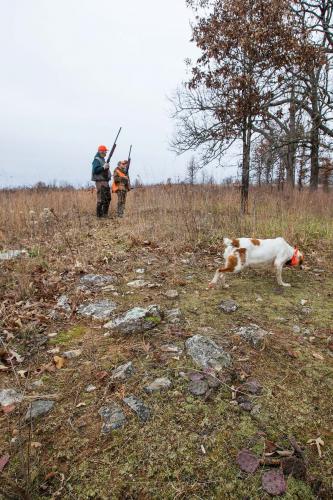


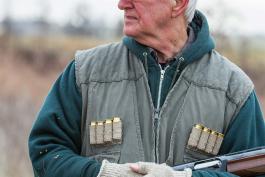

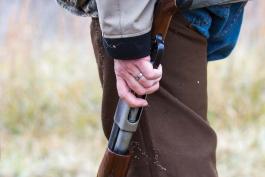





Also In This Issue


And More...
This Issue's Staff
Art Director - Cliff White
Associate Editor - Bonnie Chasteen
Staff Writer - Heather Feeler
Staff Writer - Kristie Hilgedick
Staff Writer - Joe Jerek
Photographer - Noppadol Paothong
Photographer - David Stonner
Designer - Les Fortenberry
Designer - Marci Porter
Designer - Stephanie Thurber
Circulation - Laura Scheuler






















